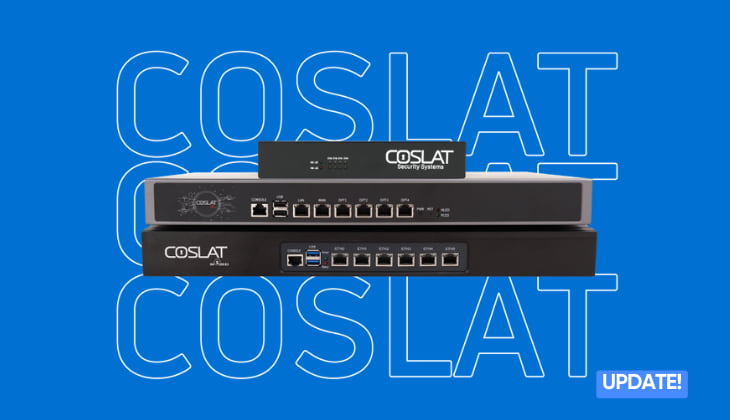
Zero Trust Model and the Firewall
What is the Zero Trust Model?
The Zero Trust model advocates that no user, device, or network should be automatically trusted. Unlike traditional network security approaches, trust in this model is not established once and for all but is dynamically ensured for each connection and data request.

Core Principles of the Zero Trust Model:
Always Verify: Every user or device must verify its identity before accessing the network.
Least Privilege Access: Users can only access the data or services necessary for their tasks.
Dynamic Verification: User status, device reliability, and network traffic are continuously monitored.
Segmentation: The network is divided into micro-segments to prevent the spread of malicious activity in case of a breach.
The Zero Trust model offers strong protection against modern threats and helps organizations strengthen their security infrastructure, especially in hybrid work environments.

How to Apply the Zero Trust Model with Coslat?
Coslat enables the implementation of the Zero Trust model through the following methods:
Authentication and Authorization
The Zero Trust model mandates identity verification before every access request. Coslat supports this principle with these features:
VPN Integration: Coslat supports protocols like OpenVPN and IPsec. VPN users must complete identity verification before accessing the network.
Two-Factor Authentication (2FA): Used with OpenVPN, this requires users to verify their identity with an additional security step beyond passwords.
Micro-Segmentation
Micro-segmentation involves dividing the network into smaller parts and securing each segment with specific rules. Coslat enables this through VLAN support:
VLAN (Virtual LAN) Configuration: Coslat allows you to divide the network into virtual segments, each with its own firewall rules.
Granular Access Control: Devices or users can only access devices within their own VLAN. Rules can be defined for access to other VLANs or networks.
Firewall Rules and Access Policies
Firewall rules, the core functionality of Coslat, support the Zero Trust model’s “least privilege access” principle:
Resource-Based Rules: Access permissions can be granted to users or devices only for required resources, such as specific IP addresses and port combinations.
Dynamic Rules: Scheduled rules in Coslat allow you to enable access during specific time periods and block it at other times.
Monitoring and Anomaly Detection
The Zero Trust model requires continuous monitoring and anomaly detection. Coslat provides:
Packet Analysis: With IDS/IPS services, Coslat analyzes traffic and generates alerts for any abnormal activities.
Reporting and Logging: Coslat logs suspicious activities and integrates with SIEM systems for broader oversight. It can also notify you via email about specific incidents.
Dynamic Access Control
To dynamically manage access requests, Coslat supports additional systems:
You can integrate protocols like SNMP, RADIUS, or LDAP to monitor user and device status. If the security status changes, specific sessions can be terminated.
Coslat provides flexibility, customizability, and robust security policies for implementing the Zero Trust model. Through a centralized management interface, you can easily control all network traffic and manage various devices and users under a unified security framework.

